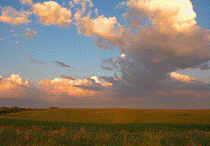
Proceedings of the North American Prairie Conferences
Date of this Version
1989
Document Type
Article
Abstract
Experiments were conducted on big bluestem (Andropogon gerardii Vitman) 10 the greenhouse and on a tallgrass site on Konza Prairie to evaluate the effects of simulated grazing on the cycling of silica (SiO2), nitrogen, and phosphorus. Concentrations of all elements increased in vegetation that had been clipped or pruned. The absolute amount of nitrogen obtained by plants 10 the greenhouse experiment was increased by clipping foliage. Phosphorus exhibited only neutral or negative responses, while the absolute amount of silica declined in all but one experiment involving root pruning. In that experiment, the absolute amount of silica in roots was increased 25% by cutting a portion of the root system. These results suggest that the direct effects of clipping or pruning on the absolute amounts of elements cycled through vegetation are usually neutral or negative. Increased silicification or grazed foliage is suggested to be a consequence of dela.yed senescence and reduced leaf area. This interpretation provides a proximate reason why silicification is an "inducible defense" against herbivores.


Comments
Published in Prairie Pioneers: Ecology, History and Culture: Proceedings of the Eleventh North American Prairie Conference, August 7-11, 1988, Lincoln, Nebraska (Lincoln, NE 1989).